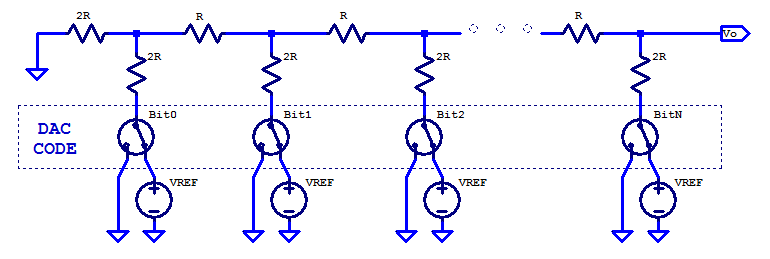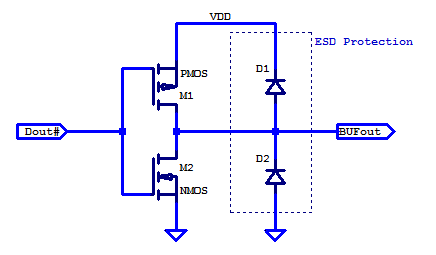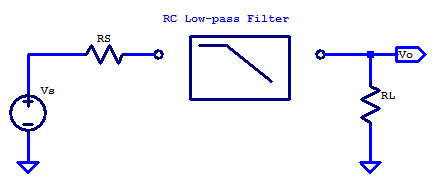A Digital to Analog Converter (DAC) in the ideal case, provides a unique transform from a digital code to an analog voltage ratiometric to a supplied voltage reference. Several codings of the digital value are available. Two of the simplest codings are unsigned binary and unsigned fractional binary. Other possible codings include: two’s complement, sign-magnitude, one’s complement, and gray code. In practice, only unsigned binary and two’s complement (signed binary) are commonly employed in a DAC. For both the signed and unsigned cases, the integer and fractional codings share the same binary representation. For example, a 3-bit DAC has the response shown in the table below.
| Decimal | Fractional | Unsigned Binary | Fractional Binary | DAC Output |
|---|---|---|---|---|
| 0 | 0/8 | 000 | 0.000 | \( 0/8 \; V_{REF} \) |
| 1 | 1/8 | 001 | 0.001 | \( 1/8 \; V_{REF} \) |
| 2 | 2/8 | 010 | 0.010 | \( 2/8 \; V_{REF} \) |
| 3 | 3/8 | 011 | 0.011 | \( 3/8 \; V_{REF} \) |
| 4 | 4/8 | 100 | 0.100 | \( 4/8 \; V_{REF} \) |
| 5 | 5/8 | 101 | 0.101 | \( 5/8 \; V_{REF} \) |
| 6 | 6/8 | 110 | 0.110 | \( 6/8 \; V_{REF} \) |
| 7 | 7/8 | 111 | 0.111 | \( 7/8 \; V_{REF} \) |






